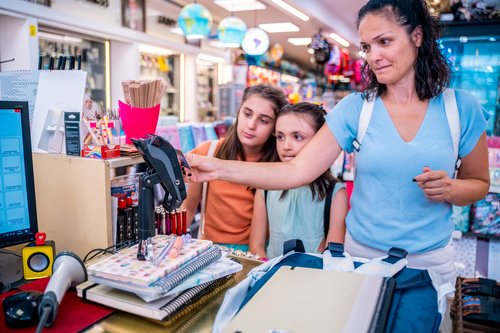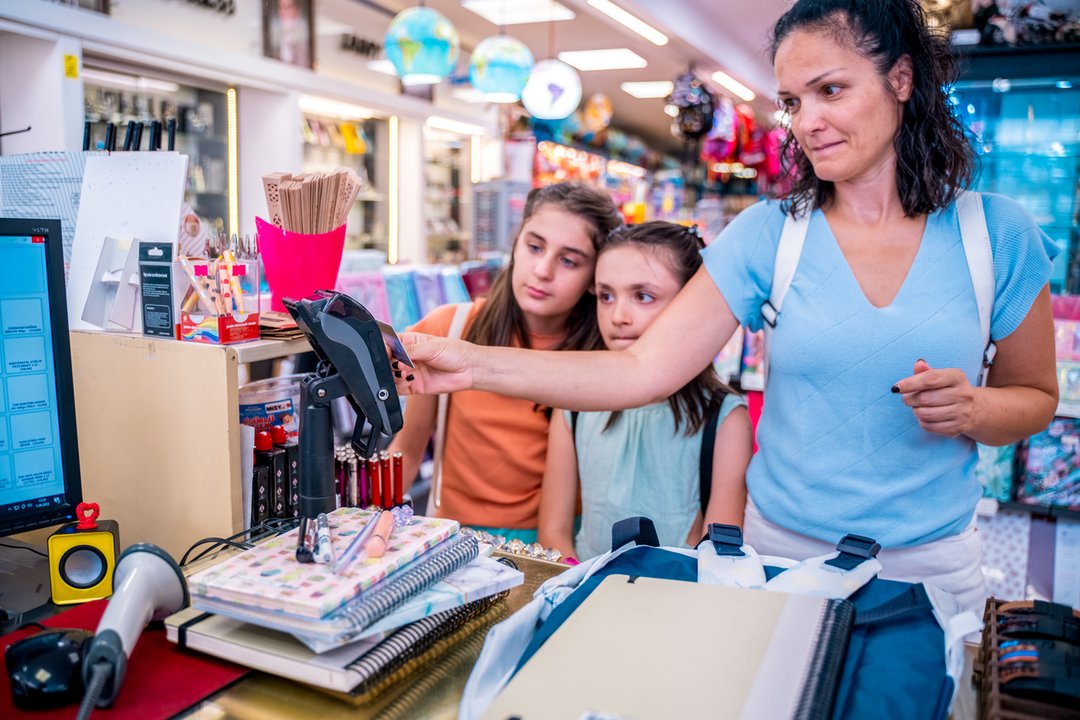
Like parents need more financial pressure than they’re already experiencing, right?
With just a few weeks until school starts again, thousands of parents are racing around getting their kids all the items they’ll need for a successful year.
These seven budgeting hacks will ensure you don’t go off budget for back-to-school and that your kids won’t go without.

iStock-1585982181
Make a list of back-to-school items that make sense for your child
Clothing, lunch boxes and electronics. Traditional supplies like pencils, calculators and notebooks. Flash cards, text books and headphones.
There are suggested supply lists and “must haves” for kids of all ages, but parents know their kids best, and what they’ll need to thrive at school. Don’t be afraid to go off script and focus your list on what will work best for your child. Make a written list of what’s essential. This list will help keep you on budget.
Take an inventory of what you already have before shopping
Duplicating supplies costs money and harms the environment. In most cases, dusting off an old binder and washing a backpack or sneakers can make them look new again. In my neighbourhood, we swap. If my household happens to be flush with pens and markers, we’ll swap with our neighbours for notebooks or whatever else we need. The idea is to see what you already have that’s on your list, so that you don’t waste money buying it again.
Investigate the best deals before you go to the stores
Many wholesalers offer excellent back-to-school bulk-buying opportunities on pencils, notebooks, clothing and electronics. This is especially useful for large families or groups of friends, who can split the stash and reduce costs.
This market is so competitive nowadays that deals on school supplies are everywhere. I investigate via websites, flyers and word-of-mouth what products are the cheapest and where; then I determine if it’s better to order online or go in person. The research also helps me route-plan in advance and save time if I do have to hit the physical shops with my kids — that’s a whole other dynamic bringing a three- and five-year-old shopping.
Space your shopping throughout the year and according to the syllabus
This document typically reveals when certain material will be covered throughout the year. For example, if a calculator isn’t needed until November, wait to buy it. There’s no need to load up with everything all at once. New running shoes, winter jackets and boots can be purchased on Boxing Day or Cyber Monday.
Pay for it with no money
Dig out all the gift cards, and organize any returns or store credits. Use up every lingering penny, take back the things you were planning to return but never got around to doing, and shop in places where you already have a credit. If you have loyalty points that could be cashed in, do it. One of my students saves up her grocery store points all year just for back-to-school shopping for her three kids.
Buy (and sell) in the second-hand market
Clothes, school equipment like desks and lamps, sports gear and electronics. This is a fantastic way to shave big dollars off of your back-to-school bills. I use this opportunity to purge and sell what isn’t needed anymore, like old iPads, or take sports gear like bikes that are too small, or skates, to consignment shops.
On the topic of electronics; why not share them? Especially if you’ve got young children, it’s unlikely they need their own computer or tablet.
Set a limit
It’s healthy to set a cap on all this shopping. For some, it could be $50 and for others $500. Think through what your budget really can handle. If you have older children who are working part-time jobs it might make sense to have them contribute toward any of the nice-to-have items on their back-to-school wish list.
The best investment for your back-to-school money is putting the cash toward creating the optimal conditions for your children to learn. That might mean you need to reserve funds for tutoring and forego a new computer. If you’re not sure if something is worth buying, use the $1 rule — take the cost of something, divide it by the number of times you’ll use it, and if it’s less than $1 per use, it’s probably OK to buy.
Comments are closed.
